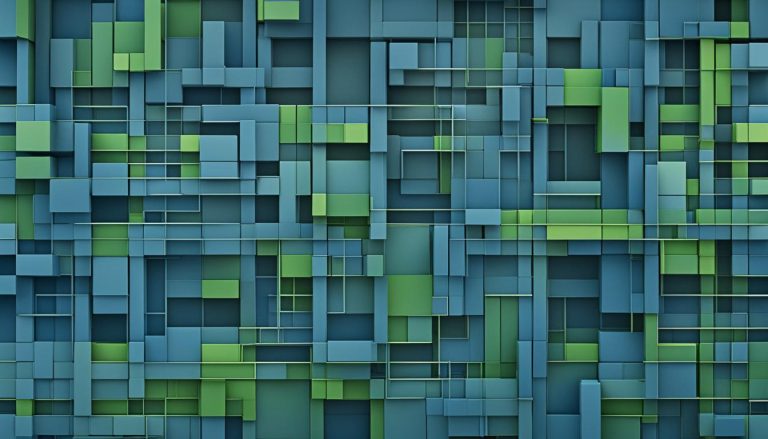In this article, I will delve into the concept of a DMZ, also known as a Demilitarized Zone. Originally, it referred to the heavily guarded strip of land between North Korea and South Korea, designed to prevent accidental conflicts. However, in the context of computing, a DMZ serves a different purpose. It acts as a barrier between an organization’s internal network and the untrusted external network, such as the internet. This allows the organization to provide services to the outside world while keeping potential threats at bay.
While DMZs have been widely used in the past, the rise of cloud technology has brought about changes in network security. In this article, I will explore the role of a DMZ in network segmentation and security, how it works, alternative approaches to its implementation, and its evolving role in the cloud era.
Key Takeaways:
- A DMZ is a concept that originated from the heavily guarded strip of land between North Korea and South Korea
- In computing, a DMZ acts as a barrier between an organization’s internal network and the untrusted external network
- DMZs have been commonly used in the past, but the rise of cloud technology has changed network security
- Network segmentation and security can still be achieved through DMZ-style strategies
- The Real DMZ Project explores the Korean Demilitarized Zone as a symbol of political and geographical divisions
The Role of a DMZ in Network Segmentation and Security
A DMZ plays a crucial role in network segmentation, which involves dividing a network into smaller, isolated segments for increased security. In most cases, a DMZ is created using a combination of firewalls and routers. The edge security device, usually a firewall, establishes the DMZ and is further protected by another router or firewall that guards the internal network. While many organizations no longer require a DMZ to protect themselves from external threats, the concept of segregating sensitive data and resources within the network is still an effective security strategy.
For example, a DMZ can be used to protect valuable data stores or access control lists, making it more difficult for unauthorized users to gain access. By creating a barrier between the internal network and the untrusted external network, potential threats are kept at bay. This network segmentation also allows for more granular control over traffic flow and access permissions. Organizations can define specific rules and policies for the DMZ, allowing only necessary traffic to pass through.
DMZ Configuration and Setup
Setting up a DMZ involves carefully configuring the firewalls, routers, and servers to ensure maximum security. The first step is to determine which assets need protection and which services should be exposed to the outside world. Once the assets and services are identified, the DMZ can be designed accordingly. Firewalls are configured to allow traffic to specific ports and protocols, while servers in the DMZ are set up to accept traffic only on those specified ports and run only the necessary services.
Another important consideration in DMZ configuration is the placement of intrusion detection systems (IDS) or intrusion prevention systems (IPS). These security measures help monitor activity within the DMZ and detect any potential malware attacks. By implementing IDS or IPS, organizations can quickly identify and respond to threats, minimizing the impact of a security breach.
| DMZ Configuration Checklist | DMZ Setup Best Practices |
|---|---|
| 1. Identify assets and services to be protected | 1. Create a separate VLAN for the DMZ |
| 2. Configure firewalls to allow necessary traffic | 2. Use separate physical or virtual servers for the DMZ |
| 3. Set up servers in the DMZ to accept traffic only on specified ports and run only necessary services | 3. Implement intrusion detection or prevention systems |
| 4. Monitor and regularly update DMZ configurations | 4. Regularly review and update DMZ rules and policies |
How a DMZ Works
A DMZ operates by creating a distinct network segment between the edge firewall, which faces the internet, and the internal network firewall. This in-between network allows for additional layers of security that potential attackers must bypass before reaching the internal network. Within the DMZ, servers and devices are connected through a switch, providing internet accessibility while also connecting to the second firewall.
The first firewall is configured to only allow necessary traffic to reach the internal LAN and servers in the DMZ. Likewise, the internal firewall only permits traffic through specific ports essential for the operation of the internal network. Servers in the DMZ should be configured to accept traffic on specific ports and protocols, while running only the necessary services. Intrusion detection systems can also be implemented to monitor activity in the DMZ and detect potential malware attacks.
DMZ Architecture
A typical DMZ architecture consists of three main components:
- Edge Firewall: This firewall serves as the first line of defense, facing the untrusted external network. It filters and controls incoming traffic, allowing only authorized traffic to reach the DMZ.
- DMZ Switch: This network switch connects the servers and devices within the DMZ, providing internet connectivity while isolating the internal network from potential threats.
- Internal Firewall: This firewall separates the DMZ from the internal network, ensuring that only necessary traffic is allowed to pass through. It provides an additional layer of protection for the internal network.
By implementing a DMZ architecture, organizations can mitigate the risk of unauthorized access to their internal network, as well as protect valuable data and resources from external threats.
Alternative Approaches to DMZ Implementation
While the traditional method of implementing a DMZ involves using firewalls and routers, smaller organizations may opt for alternative approaches that are more cost-effective and easier to manage. One such approach is utilizing designated DMZ ports on home or small business routers. These ports allow for the placement of specific devices, such as web servers, in the DMZ while sharing the same IP address as the external network. However, it is important to note that this method may not provide the same level of security as a traditional DMZ setup.
To enhance security when using DMZ ports, it is advisable to add a second firewall behind the designated port. This additional layer of protection can help mitigate potential threats and ensure that only authorized traffic is allowed into the DMZ. It is also recommended that organizations without an IT staff seek the assistance of a consultant to properly set up and manage the DMZ to maximize its effectiveness.
When implementing a DMZ, it is crucial to consider the specific needs and requirements of the organization. While alternative approaches may be suitable for smaller organizations, larger enterprises may still opt for traditional DMZ configurations to ensure a higher level of security. It is important to carefully evaluate the available options and select the approach that best aligns with the organization’s network security goals and resources.
| DMZ Approach | Advantages | Disadvantages |
|---|---|---|
| Traditional DMZ Setup |
|
|
| DMZ Ports on Home/Small Business Routers |
|
|
The Evolving Role of DMZs in the Cloud Era
In the rapidly evolving landscape of network security, the role of DMZs has undergone significant changes with the rise of cloud technology. While many companies have shifted their externally-facing infrastructure to the cloud, the concept of network segmentation and security, which DMZs provide, remains relevant and important. DMZs offer an additional layer of protection for sensitive data and resources within an organization’s network, mitigating potential threats and providing time for threat detection and response systems.
Cloud service providers now offer robust security measures, making it more efficient and cost-effective to host web servers and deploy applications externally. This shift has led to a decline in the need for organizations to maintain their own DMZs. However, the fundamental principles of DMZ-style network segmentation can still be applied effectively. By creating additional layers of protection, organizations can reinforce the security of their networks, ensuring that only authorized traffic can access sensitive resources.
As the DMZ evolves in the cloud era, it’s important to consider the architecture of the network. A well-designed DMZ architecture should include multiple layers of security, such as firewalls, routers, and intrusion detection systems. These components work together to create a secure barrier between the external network and the internal network, protecting critical assets from potential threats. Regular monitoring and updates are crucial to maintain the integrity and effectiveness of the DMZ architecture.
| DMZ Security Measures | DMZ Network Architecture |
|---|---|
| – Firewalls – Intrusion Detection Systems – Access Control Lists |
– Two Firewalls: One for the DMZ and one for the Internal Network – Routers to route traffic between the DMZ and Internal Network – Segregated Subnets for different services within the DMZ |
While the cloud era has revolutionized the way organizations approach network security, the principles that underpin DMZs are still valuable. By adapting and implementing DMZ architectures that align with the changing landscape, organizations can optimize their security measures and protect their valuable assets.
The Real DMZ Project: Examining Border Politics and Forbidden Landscapes
The Real DMZ Project is a groundbreaking initiative that delves into the complexities of the Korean Demilitarized Zone (DMZ) as a physical representation of the intricate divisions between North and South Korea. Led by curator Sunjung Kim, this project combines collaborative exhibitions, educational programs, and commissioned works to explore the historical context behind the creation of the DMZ, including the Korean War and the Cold War.
Through interdisciplinary collaborations, the Real DMZ Project offers new perspectives and interpretations of border politics and forbidden landscapes. It engages artists, scholars, and experts in fields such as history, geography, and ecology to shed light on the social and ecological aspects of the DMZ. By doing so, it prompts us to reflect on the impact of political divisions and the environment on the Korean peninsula.
The Real DMZ Project goes beyond traditional boundaries, encouraging a deeper understanding of the DMZ’s historical and contemporary relevance. It challenges conventional narratives and stimulates dialogue about the complexities surrounding the Korean Demilitarized Zone. Through its exhibitions and commissioned works, this project encourages viewers to question the impact of border politics on societies and rethink the notion of geographical divisions.
Table: Collaborators in the Real DMZ Project
| Name | Role |
|---|---|
| Artist A | Exhibition Contributor |
| Historian B | Research Consultant |
| Geographer C | Ecological Advisor |
| Scholar D | Interdisciplinary Expert |
The Real DMZ Project serves as a platform for collaborative exploration and critical discourse. By bringing together diverse perspectives and expertise, it offers a multidimensional understanding of the DMZ, transcending its physical boundaries and symbolic implications. By engaging with the Real DMZ Project, we gain valuable insights into the complexities of border politics and the profound impact of geographical divisions.
Conclusion
While the use of DMZs in traditional network security has evolved with the advent of cloud technology, the concept of network segmentation and security remains relevant. A DMZ can still serve as an effective strategy for protecting sensitive data and resources within an organization’s network.
Furthermore, initiatives like the Real DMZ Project demonstrate the ongoing significance of the DMZ as a symbol of political and geographical divisions. By engaging with interdisciplinary collaborations and exploring the multifaceted aspects of the DMZ, we can gain a deeper understanding of its historical and contemporary relevance.
FAQ
What is a DMZ (Demilitarized Zone)?
A DMZ is a concept that originated from the heavily guarded strip of land between North Korea and South Korea. In the context of computing, a DMZ serves as a barrier between an organization’s internal network and the untrusted external network, such as the internet.
What is the role of a DMZ in network segmentation and security?
A DMZ plays a crucial role in network segmentation by dividing a network into smaller, isolated segments for increased security. It allows organizations to provide services to the outside world while keeping potential threats at bay.
How does a DMZ work?
A DMZ creates a distinct network segment between the edge firewall and the internal network firewall. Servers and devices within the DMZ are connected through a switch, providing internet accessibility while also connecting to the second firewall. Specific traffic and ports are allowed through each firewall to safeguard the internal network.
Are there alternative approaches to DMZ implementation?
For smaller organizations, designated DMZ ports on home or small business routers can be used to implement a DMZ. However, it is advisable to add a second firewall behind the designated DMZ port for enhanced security.
What is the evolving role of DMZs in the cloud era?
The rise of cloud technology has significantly impacted the use of DMZs. Many companies now host their externally-facing infrastructure in the cloud, relying on the robust security measures provided by cloud service providers. However, the concept of network segmentation and security remains relevant, and DMZ-style strategies can still be effective.
What is the Real DMZ Project?
The Real DMZ Project is an initiative that explores the Korean Demilitarized Zone as a physical symbol of the divisions between North and South Korea. Through exhibitions, education programs, and commissioned works, the project delves into the historical, social, and ecological aspects of the DMZ.
Matt is doing business in information technology since 1992. After discovering Linux he soon fell in live with Windows Operating System.


